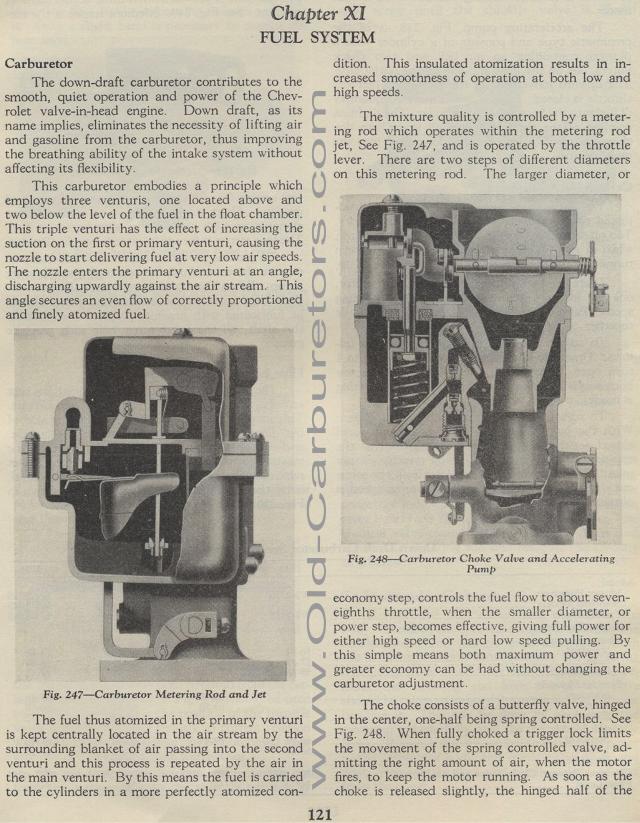1935 Chevy FUEL SYSTEM
Carburetor
The down-draft carburetor contributes to the smooth, quiet operation
and power of the Chevrolet valve-in-head engine. Down draft, as
its name implies, eliminates the necessity of lifting air and gasoline
from the carburetor, thus improving the breathing ability of the
intake system without affecting its flexibility.
This carburetor embodies a principle which employs three venturis,
one located above and two below the level of the fuel in the float
chamber. This triple venturi has the effect of increasing the suction
on the first or primary venturi, causing the nozzle to start delivering
fuel at very low air speeds. The nozzle enters the primary venturi
at an angle, discharging upwardly against the air stream. This
angle secures an even flow of correctly proportioned and finely
atomized fuel.
Fig. 247— Carburetor Metering Rod and Jet
The fuel thus atomized in the primary venturi is kept centrally
located in the air stream by the surrounding blanket of air passing
into the second venturi and this process is repeated by the air
in the main venturi. By this means the fuel is carried to the cylinders
in a more perfectly atomized con-
121dition. This insulated atomization results in in-creased smoothness
of operation at both low and high speeds.
The mixture quality is controlled by a metering rod which operates
within the metering rod jet, See Fig. 247, and is operated by the
throttle lever. There are two steps of different diameters on this
metering rod. The larger diameter, or
Fig. 248— Carburetor Choke Valve and
Accelerating Pump
economy step, controls the fuel flow to about seven-eighths throttle,
when the smaller diameter, or power step, becomes effective, giving
full power for either high speed or hard low speed pulling. By
this simple means both maximum power and greater economy can be
had without changing the carburetor adjustment.
The choke consists of a butterfly valve, hinged in the center,
one-half being spring controlled. See Fig. 248. When fully choked
a trigger lock limits the movement of the spring controlled valve,
admitting the right amount of air, when the motor fires, to keep
the motor running. As soon as the choke is released slightly, the
hinged half of the
 |
